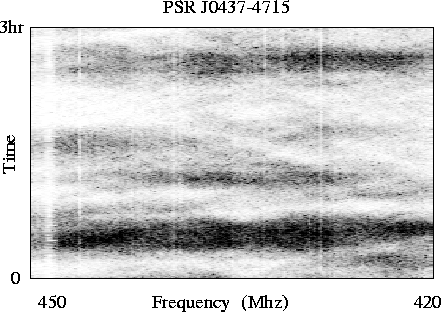
Most pulsars are born in violent explosions which ``kick'' them off at high speeds. Simon Johnston and Luciano Nicastro observe, however, that millisecond pulsars are moving comparatively slowly, suggesting a different origin.
Pulsars are spinning stars made up of neutrons. They are more massive than the Sun but are only some 20 kilometers across. Pulsars emit beams of radio waves which we detect as pulses in the same way that we see flashes from the rotating beam of a lighthouse. We know that ``normal'' pulsars are born in the explosive death throes of massive stars, but a different origin has been proposed for millisecond pulsars (those which pulse every few thousandths of a second): perhaps millisecond pulsars are produced during the collapse of a white dwarf star?
Simon Johnston and Luciano Nicastro (ITeSRE-CNR) set out to test this proposal, which predicted that millisecond pulsars should move with comparatively low speeds. Using the Parkes radio-telescope they have estimated the speeds of four millisecond pulsars by observing the scintillation, or twinkling, of the pulsar signals. This twinkling is caused by the rarefied plasma which makes up some of the interstellar medium between the Earth and the pulsar, and occurs in much the same way as the Earth's atmosphere causes the twinkling of the stars we see with our eyes. The faster the pulsar moves across the sky, the more rapid the scintillation. In this way Simon and Luciano found that all four of their millisecond pulsars are moving at speeds less than 100 kilometers per second, in stark contrast to ``normal'' pulsars, which typically move at speeds of 400 kilometers per second or more. These high speeds are thought to arise as impulsive ``kicks'' during the supernova explosions which produce normal pulsars. The discovery of low speeds for millisecond pulsars supports the alternative, white dwarf collapse model for their origin. Effort is now being concentrated on inferences which can be drawn about the whole millisecond pulsar population, beyond the group which was actually studied.

Gray-scale representation of the variation of a pulsar's brightness
with both frequency
(horizontal) and time (vertical).
The darker a given pixel, the brighter the pulsar at that frequency and time.
The speed of the pulsar can be determined from the structure in the time direction.